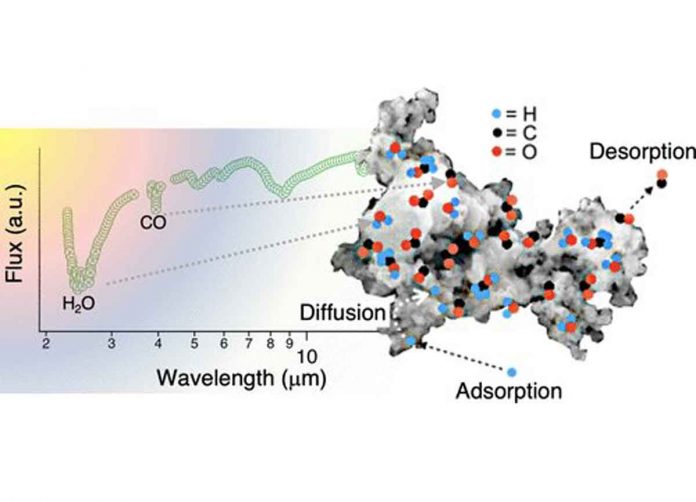Scientists from around the world have published data that will help astronomers better understand what they see in space. The James Webb Space Telescope will send back its first images from space in June 2022. It will provide astronomers with new riddles to solve.
The data provide astronomers with the information they need to understand how interstellar ice evaporates and recondenses during the formation of stars and planets.
It is the product of over 20 years of laboratory data collection. 19 scientists from around the world coordinated the data collection and helped interpret the findings.
The data focuses on how interstellar ice evaporates and recondenses in space. This depends on how close or far it is from a star. The formation of snowlines where specific substances condense.
Professor Martin McCoustra, an astrochemist at Heriot-Watt University, was one of the scientists who helped produce the consensus.
For over 15 years McCoustra has been recreating deep space in his Edinburgh laboratory. McCoustra has used ultrahigh vacuum technology to mimic space conditions and examine the chemistry behind how stars and planets are created.
McCoustra said the astronomy community can now find all the data relating to thermal desorption in one place. Thanks to the group effort behind this data compilation. Scientists have also highlighted the limitations of the data to ensure it is used appropriately in models and to encourage other scientists to explore ice desorption processes.
The data sets values for the two parameters used to describe how quickly molecules desorb from dust grain surfaces. The activation energy for desorption tells how strongly a chemical substance is held on a surface.
The frequency factor tells scientists how fast desorption would occur if there was no activation energy required.
The study has been published in the journal ACS Earth and Space Chemistry.

